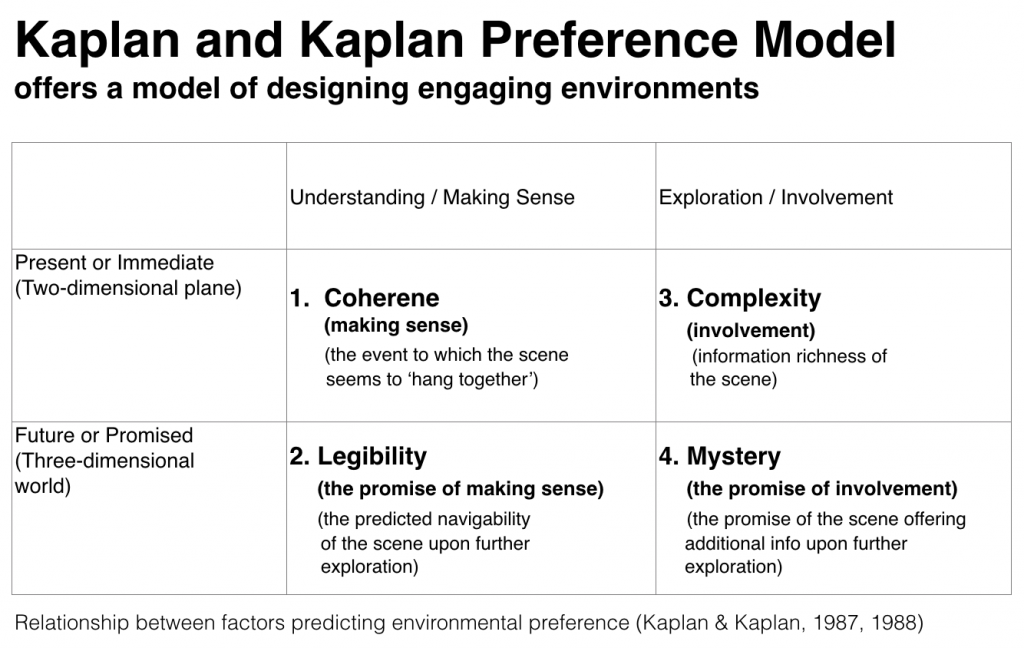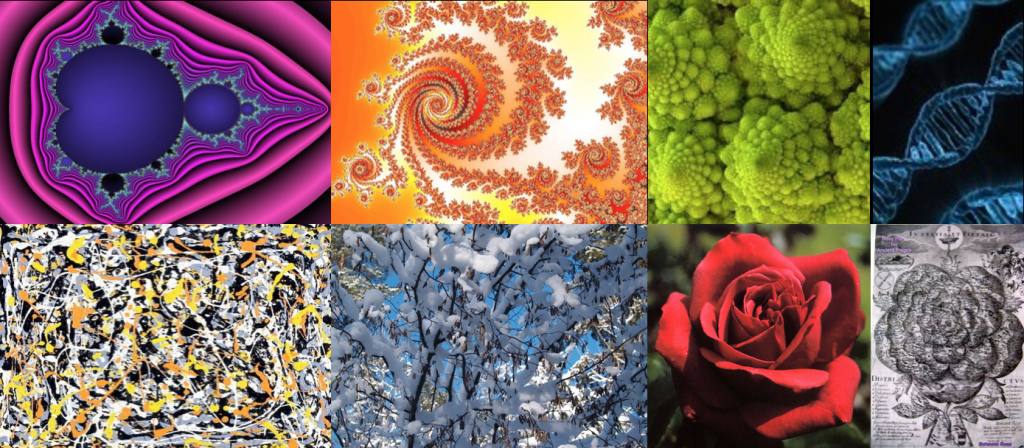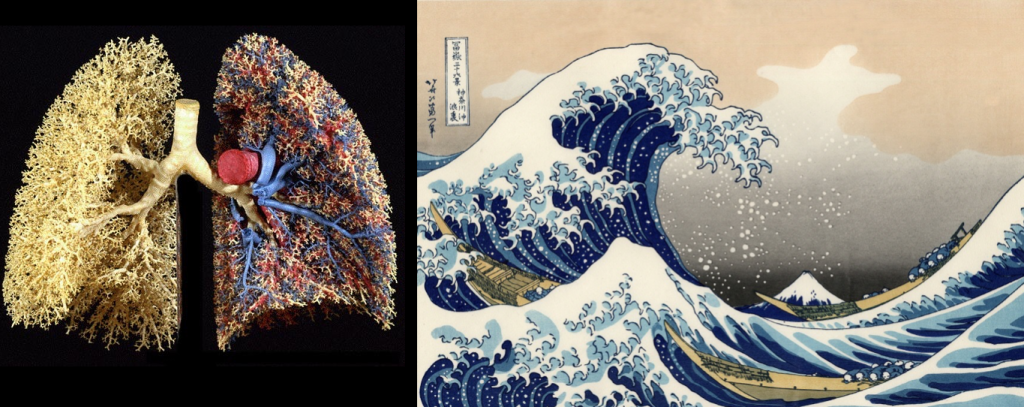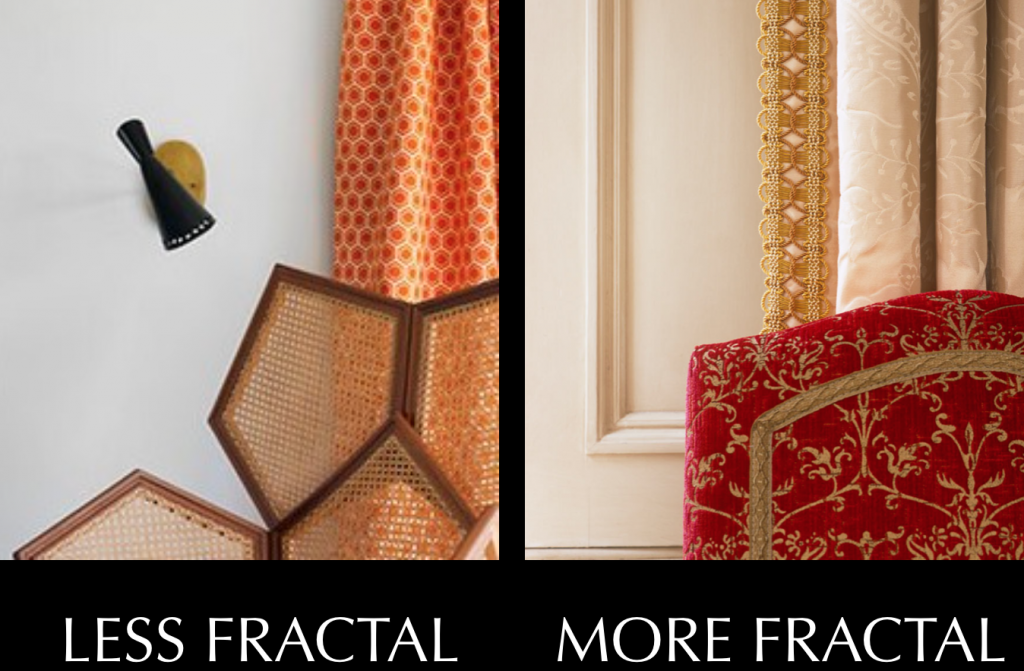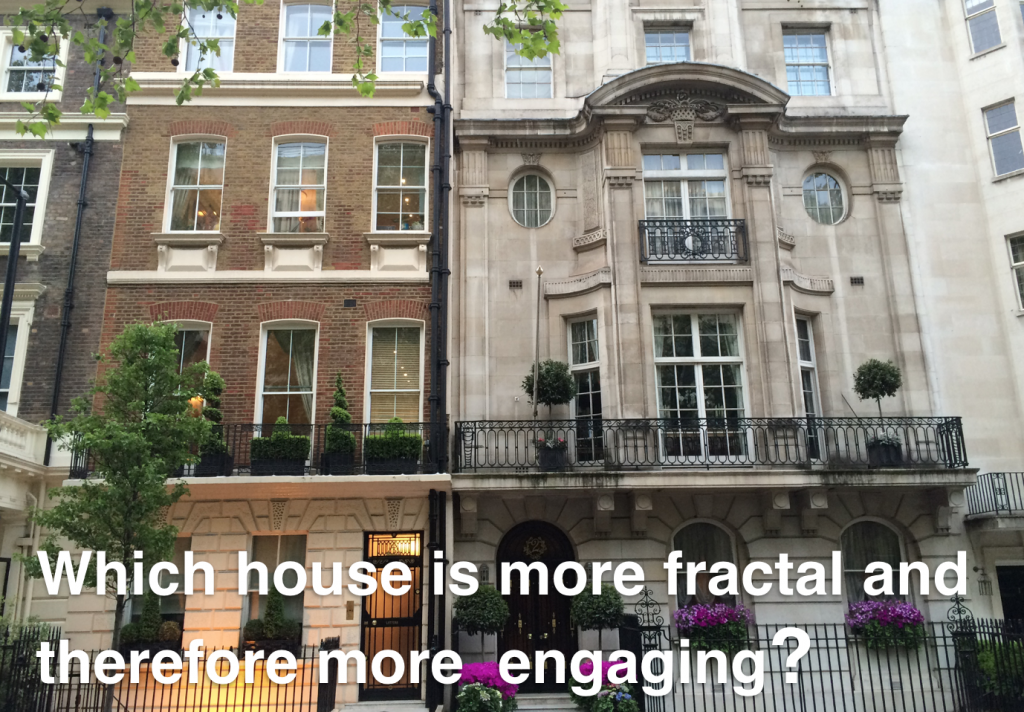Kaplan and Kaplan Preference Model
offers a model of designing engaging environments which are nourishing and foster creativity and ingenuity
Environmental Psychology theory Kaplan and Kaplan’s preference model (1989) looks at four preference factors coherence, legibility, complexity, and mystery which are key to engaging, stimulating and creative environments. People, whether at home or workplace, thrive in environments that comply with the Kaplan and Kaplan model.
Complexity and fractality
Complexity can be accomplished with rich, nourishing environments. Nature is complex. Fractals are complex. Our bodies are mostly fractal. Fractality is a measure of complexity. A fractal is a mathematical set that usually displays
self-similar patterns (Benoît Mandelbrot, 1975). The concept of fractality extends beyond self-similarity and can include detailed patterns repeating themselves. Examples of fractal patterns can be seen in: cauliflowers, your DNA, Pollock’s paintings, snowflakes, roses, and some cities such as Prague which was designed on the pattern of a rose (see below – bottom right) and your lungs and waves.
For more info and examples read: Environmental Psychology for Design, Second Edition by Dak Kopec

